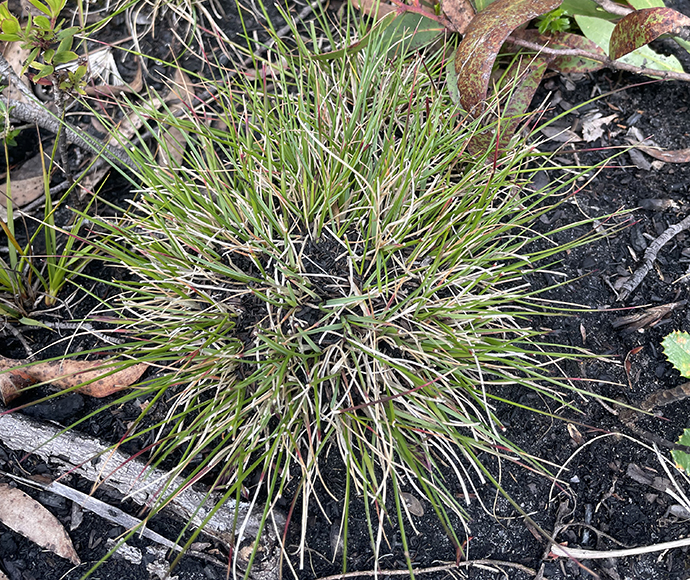Budawangs wallaby grass bounces back
A population of the once ‘almost-extinct’ Budawangs wallaby grass (Plinthanthesis rodwayi) has been recently re-discovered on Mount Currockbilly, in south-eastern NSW, after disappearing from the mountain in the late 1970s.
The find not only took a keen eye but also the green thumb of retired Saving our Species Senior Threatened Species Officer, Dr Keith McDougall.
Budawangs wallaby grass has been on the decline for over 50 years due to lack of fire. Fire helps reduce competition for habitat from native shrubs and trees that also grow at the summit of Budawang and Currockbilly mountains.
The critically endangered plant was down to only 100 plants at Mount (Mt) Budawang before the 2019–20 bushfires, but is now thriving after the hot fire event and La Niña rains gave the species a vital boost.
The Mt Currockbilly population, however, was thought to be lost until Dr McDougall and Saving our Species South East Team Leader, Dr Damon Oliver decided to make the long, slow ascent up the mountain to take one more look.
Thanks to some local hungry wombats and other native herbivores who had devoured the grass to their bases, they couldn’t be sure what they found was Budawangs wallaby grass. Dr McDougall took small samples from the site and, with his unmatched botanical expertise and horticultural skills, successfully nurtured these samples into flourishing adult plants. This enabled him to properly identify and confirm the species.
Budawangs wallaby grass was declared an Asset of Intergenerational Significance (AIS) in 2021. This gives it special protection under the National Parks and Wildlife Act 1974 and for NSW National Parks and Wildlife Service (NPWS) to prioritise management to protect this species for future generations. The NPWS team at Budawangs National Park are conducting feral species control and have installed signage in the area to alert bushwalkers about this special grass and to stay on the trails.
With the re-discovery of the grass on Mt Currockbilly, Saving our Species, together with the local NPWS team, will develop a management plan to include this new population in conservation measures for the species.
In addition, a large amount of seed was collected from the Mt Budawang population’s flowers in January this year to add to the Australian PlantBank seed collection at The Australian Botanic Garden Mount Annan. This collection plays a vital role in the species’ survival with Saving our Species working in partnership with the Australian PlantBank to safely store the seed, which may one day be used to increase the Mt Currockbilly population.
The Mt Budawang population has now grown to reach an estimated 90,000 plants, and with the new population re-discovered on Mt Currockbilly, the future looks a lot greener for this threatened species





